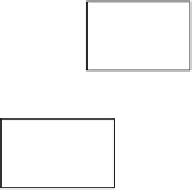Image Processing Reference
In-Depth Information
Color
sensing
device
Printing
device
CMYK values
for target
color
+
-
Parametric
model for
assigned cluster
Cluster
assignment
Error
FIGURE 7.12
System block diagram showing the adaptation process with cluster assign-
ment used to tune the parameters of the piecewise linear model.
samples available then it will be easy to increase the number of clusters, which in
turn can provide improvements to the model accuracy. Although increasing
number of clusters improves the accuracy, it also increases the number of models
and hence the total number of parameters required for modeling the entire color
space. Therefore, a trade-off between the number of model parameters, and the
number of clusters is necessary.
Figure 7.12 shows a block diagram of the adaptation process. The same block
diagram can be used for predicting the L*a*b* values of test colors when their
CMYK values are known. Cluster centroid and parameter matrix
for each of
the clusters are used during this process. The prediction process is described by
the following steps:
u
1. Receive the CMYK values for the prediction set.
2. Calculate the Euclidean distance from the current color sample to each
of the cluster centroids in CMYK space.
3. Determine which of the Euclidean distances in step #2 is the shortest.
This is done in the cluster assignment block, which then becomes the
cluster of choice for the color whose CMYK values are to be estimated
using the model.
4. Calculate the L*a*b* values using the updated parameters of the model
corresponding to the cluster in step #3.
The above approach was used in our simulations in Figures 7.9 and 7.10 for a
group of test colors that is separate from the training set. Now, during the adap-
tation process, we need to run following steps at a minimum:
1. Receive the L*a*b* values from the sensor (from the customer images or
obtained by scheduling patches).
2. Calculate the Euclidean distances from the current color sample to each
cluster centroid in L*a*b* space. Note: we do not use the CMYK space as
in the prediction process.
3. Determine which of the Euclidean distances in step #2 is the shortest.
This is done in the cluster assignment block of Figure 7.12. This becomes
the cluster of choice for the color sample.
4. Run the RLS algorithm, Equations 7.25 and 7.26, to update the
matrix
corresponding to the cluster of choice based on the cluster having the
centroid with the shortest Euclidean distance.
u





















Search WWH ::

Custom Search